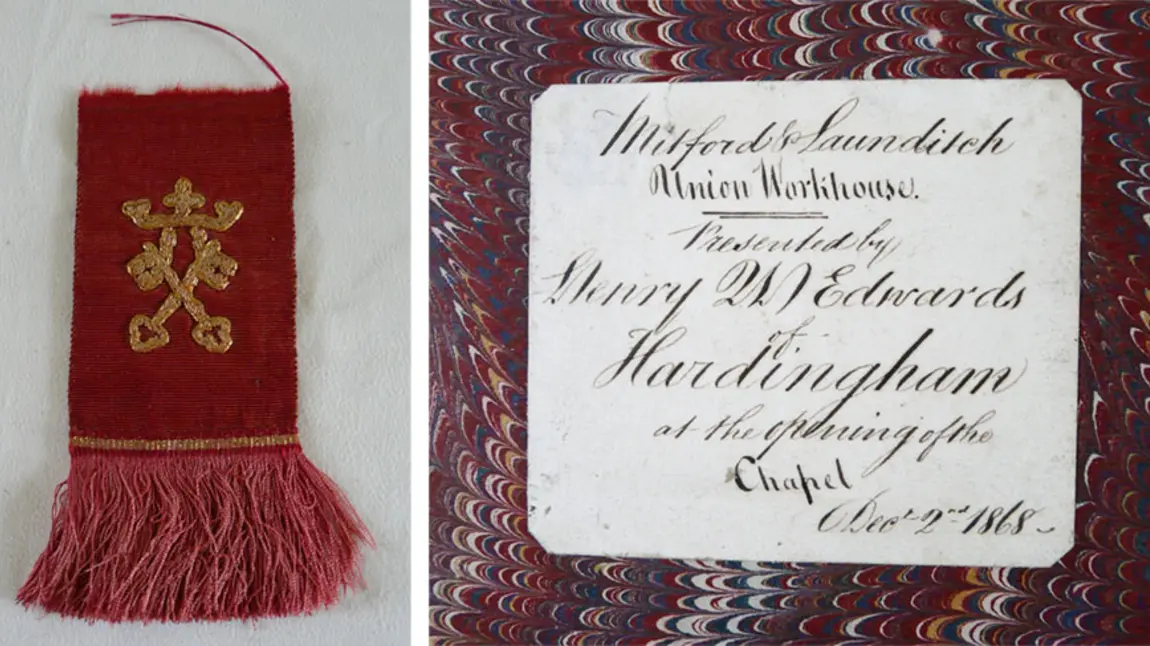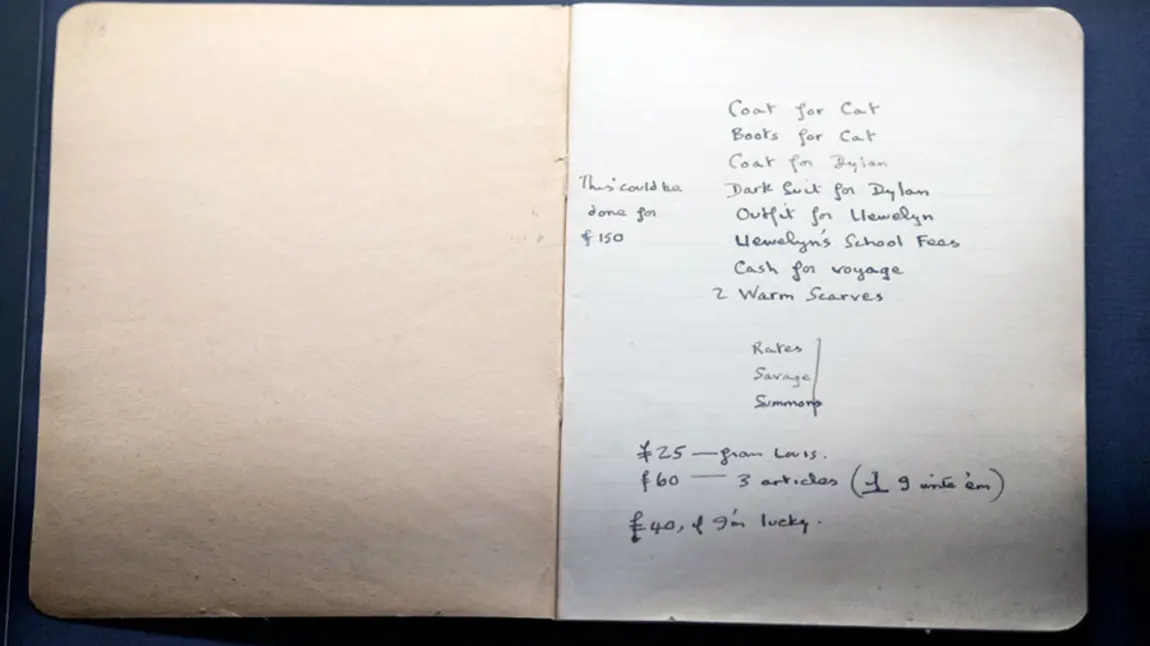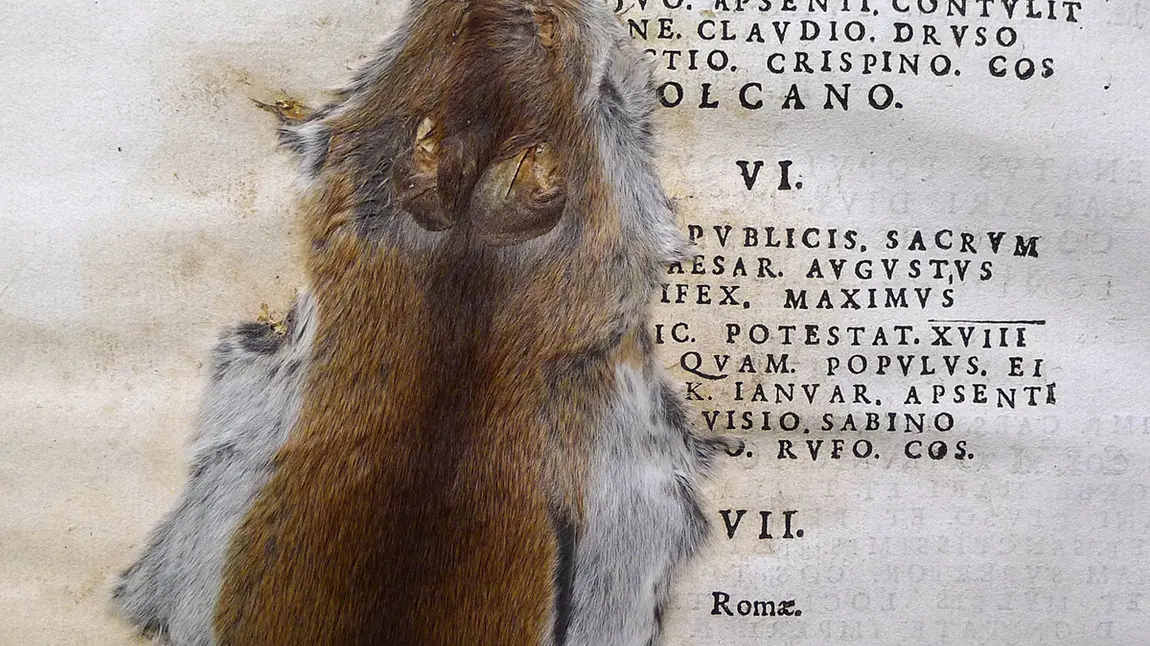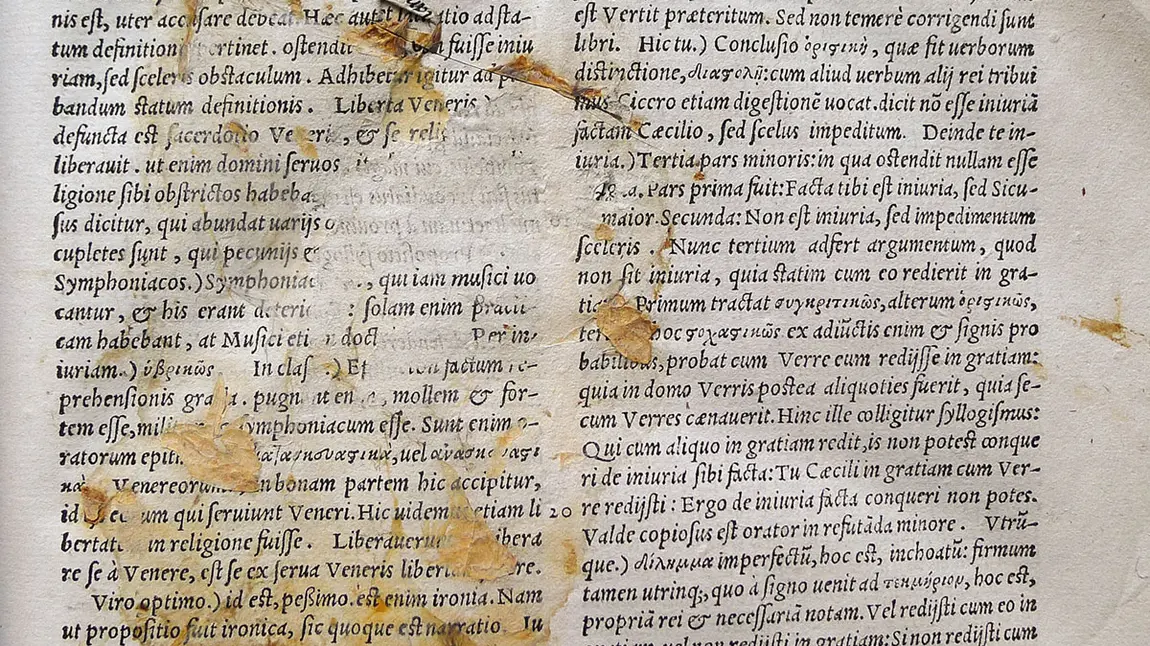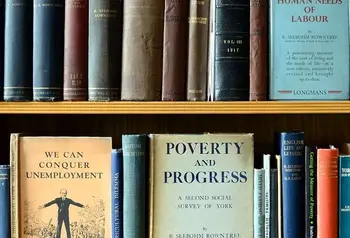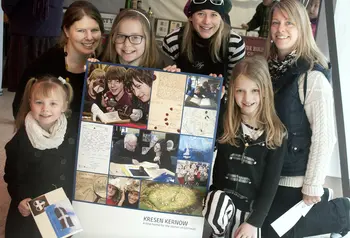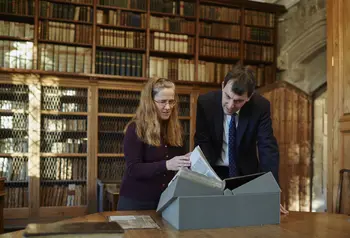Lost and found in books
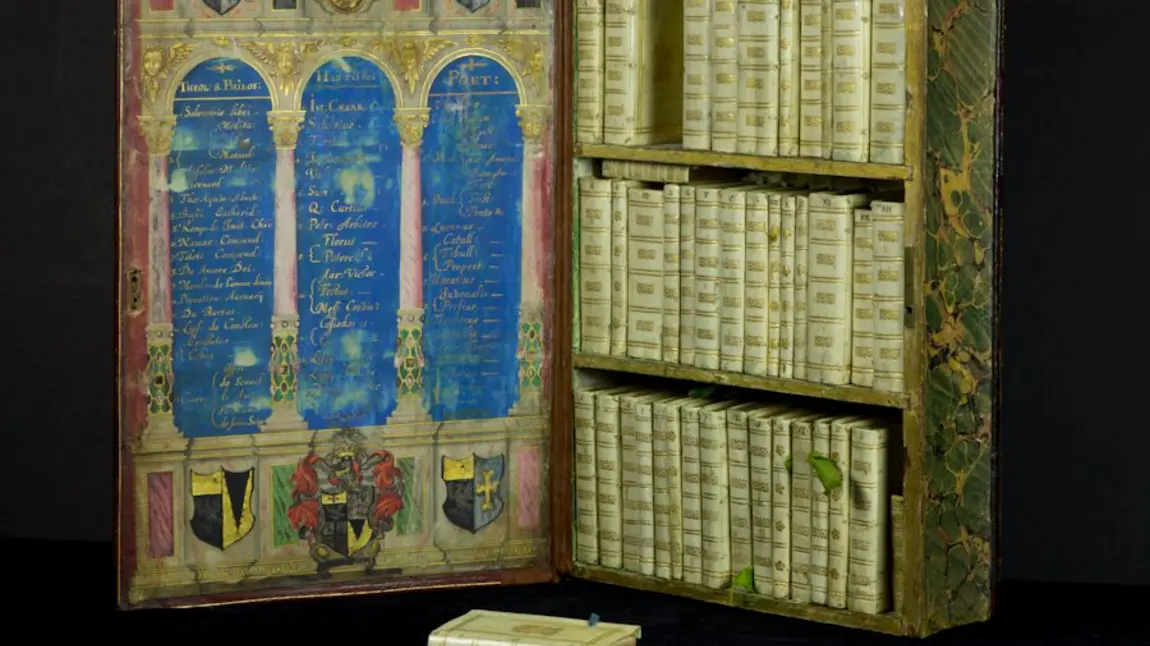
Ordinary made extraordinary
Welsh poet Dylan Thomas wrote all his early poems in plain school notebooks, and they are packed with drafts, edits, re-workings, drawings, lists and much more. One of the most poignant, is a notebook from later in his life, held in the collection of the Dylan Thomas Centre, which was awarded £935,700 by HLF to secure its future and Thomas’s legacy.
Literature Officer Jo Furber explains that on opening the notebook, she discovered a shopping list Thomas had made of things to buy with earnings from his imminent American lecture tour. “What makes it especially poignant,” she explains, “is that Dylan never returned from that trip, as he died in New York two weeks after his 39th birthday. It’s a remarkable example of how ordinary objects can become extraordinary.”
A mark of time
Megan Dennis, Curator at Gressenhall Farm and Workhouse, shared with us a fragment of vestment found within a Mitford and Launditch Union Workhouse Holy Communion book, which was “possibly used as a bookmark”. It was discovered during the HLF-supported Voices from the Workhouse project, which transformed the museum displays and helped to tell the real stories of the people who lived and worked in the workhouse.
17th-century Kindle
On the outside it just looks like a big book. Open the ‘cover’ and you’ll discover that it’s actually a wooden case bound in brown turkey leather which houses three shelves of small gold-tooled, vellum-bound books. It’s known as a travelling library, and was probably commissioned by William Hakewill MP (1574-1655) for a friend around 1617-1618.
Laura Beare, Marketing and Galleries Assistant Manager at Treasures of the Brotherton Gallery – which was made possible thanks to a grant of almost £1.4million from HLF – says: “This is one of our most curious items. We like to call it our 17th-century Kindle!”
When 'trash' turns to treasure
Among the many and rare volumes that form part of Salisbury Cathedral's HLF-supported project, Beyond the Library Door: Sharing Books and Bindings project, is a 15th Catholicon or Latin dictionary. But this modest-looking volume is more than what it seems on the outside.
Inside the cover, handwritten on the first paper flyleaf of the Johannes Balbus de Janua’s catholicon (printed in 1497), is one of the earliest and rarest descriptions of French Basse danses, or late medieval period court dances.
But even more fascinating was the discovery that the book, bound in finely-stamped leather, contained unwanted papers from William Caxton’s edition of Gower’s Confession of 1483, which were used to reinforce the binding. Caxton is credited with bringing the printing press to England in the 1470s, and these fragments - used as a 'filler' - are actually from one of Caxton’s earliest printed works, and are the Salisbury Cathedral Library’s only known example of Caxton’s printing.
An untimely end
And perhaps the most strange, and some might say gruesome, find comes from Salisbury Cathedral, too, re-discovered during the Beyond the Library Door project - a small rodent who met a rather untimely end between the pages of a Latin textbook.
Published in 1684, the book contains a very flat, dried mouse, and the chief suspects in its demise are 19th century Choristers. It's a suspicion Archivist Emily Naish says was confirmed by a note in the margins of another book which reads: ‘the first mouse we killed was August 2’.
You tell us
When I spoke to HLF staff to gather contacts for the above projects, I heard many more personal tales – from “a fiver in a book from a second hand stall” to “a note from a long-forgotten admirer, presumably prior to my father, found in my mother’s poetry collection; although she’s a bit coy about that”.
What about you - what’s the most weird, wonderful, disturbing, or heart-warming thing you’ve ever found inside the pages of a book? Please use the comments below to share your stories and images. (Please note, you will need to be logged in to your HLF account to comment, and also to see the images posted by others).
You might also be interested in...
